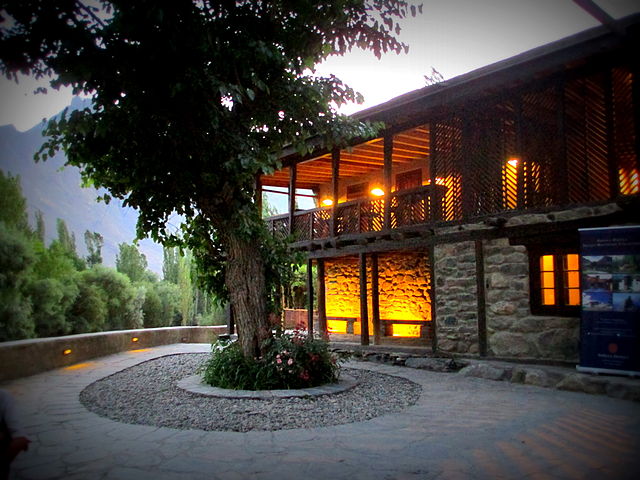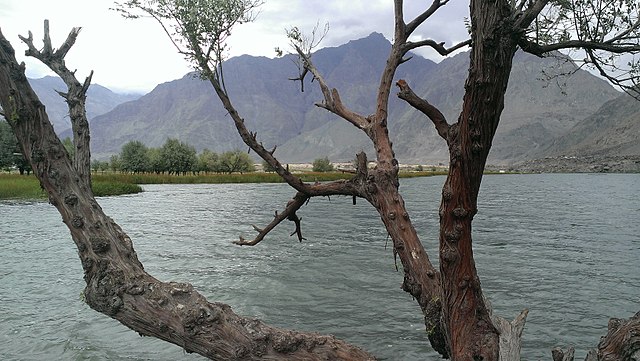Discover Shigar Valley
Gateway to Majestic Peaks and Serene Landscapes

Climate & Weather
Mild summers, chilly winters, average 15°C temperature.

Popularity For
Commercial District & It's Popular Tourist Destinations

Transport Routes
Well-connected by road, International airport with flights.

Historical Places
Ancient forts, Buddhist relics and archaeological sites.

Tourist Points
9 Tourists Attractive Destinations in Skardu

Hotel/Restaurant
145 Hotel & Restaurant in Skardu city.

Facts & Figures'
Strategic trade hub at river confluence. Base for K2 expeditions. Vibrant cultural festivals.

Geographical Location
Location= Northern Area of Pakistan Area= 11,660 km2 Altitude= 2,500m above sea level.
Shigar valley tourist places

Nestled in the heart of the Karakoram Range, Shigar Valley is a serene and culturally rich destination in northern Pakistan. Known as the “Gateway to the Karakoram,” this valley is celebrated for its breathtaking landscapes, historic fortresses, and warm Balti hospitality. As the starting point for expeditions to some of the world’s highest peaks, including K2, Shigar Valley offers a unique blend of natural beauty and historical significance. From the historic Shigar Fort to the surreal cold deserts, this valley is a treasure trove for adventurers, history enthusiasts, and nature lovers alike, promising an unforgettable journey through one of Pakistan’s most captivating regions.
Shigar Fort (Fong Khar)
Shigar Fort, known as Fong Khar or “Palace on the Rock,” is the most iconic landmark in Shigar Valley. This 400-year-old fort has been beautifully restored and now serves as a heritage hotel. Visitors can explore its traditional Balti architecture, intricate woodwork, and a small museum showcasing regional artifacts. The serene gardens surrounding the fort add to its charm, making it a must-visit for history and culture enthusiasts.


Sarfranga Cold Desert
Sarfranga Cold Desert, another remarkable desert in Shigar Valley, is known for its expansive white sand dunes. It hosts the annual Sarfranga Jeep Rally, attracting adventure seekers from across the country. The contrast of the dunes against the snow-capped peaks creates a breathtaking scene, making it a must-see destination for visitors.
Blind Lake
Blind Lake, also known as Sheosar Lake, is a tranquil spot in Shigar Valley. Surrounded by rugged mountains, this secluded lake offers crystal-clear waters and a peaceful atmosphere, ideal for picnics and leisurely walks. Its untouched beauty makes it a hidden gem for nature lovers.

Hashupi Bagh is a lush orchard in Shigar Valley, famous for its apricots, apples, and cherries. During the harvest season, visitors can enjoy fresh fruit and experience the valley’s agricultural life. The orchard is a beautiful place for a stroll and to savor the natural bounty of the region.
Hashupi Bagh
Accommodation Options
Hotels: Shigar Valley offers a variety of hotels, ranging from budget-friendly to luxurious. The most notable is the Serena Shigar Fort, a heritage hotel offering a blend of modern comfort and traditional architecture. Other options include smaller hotels and inns in the Shigar town, providing cozy stays with basic amenities.
Guesthouses: For a more intimate experience, guesthouses in Shigar Valley are ideal. They offer personalized service and a chance to interact with locals. Most guesthouses are family-run, providing simple, clean rooms and home-cooked meals.
Camping: For adventure seekers, camping in Shigar Valley is a fantastic option. Several campsites are available near the Shigar River and in surrounding areas, offering stunning views of the mountains and a closer connection to nature.
Local Cuisine & Dining
Traditional Dishes: Shigar Valley is rich in traditional Balti cuisine, known for its hearty and flavorful dishes. Some must-try dishes include “Prapu” (a type of local pasta), “Marzan” (a butter and apricot-based dessert), and “Skieu” (a noodle soup with vegetables and meat).
Dining Options: Dining in Shigar Valley is an experience in itself. Besides hotel restaurants, small local eateries offer an authentic taste of Balti food. Many guesthouses also offer meals, allowing visitors to enjoy traditional home-cooked dishes.
Shopping & Souvenirs
Handicrafts: Shigar Valley is renowned for its traditional Balti handicrafts. Visitors can find intricately woven rugs, woolen shawls, and handmade pottery. These crafts make for unique and meaningful souvenirs.
Local Products: In addition to handicrafts, Shigar is famous for its organic apricots and dried fruits. Locally produced jams, honey, and herbal teas are also popular items to take home.
Travel Tips & Safety
Altitude: Shigar Valley is located at an elevation of approximately 2,500 meters (8,200 feet). Visitors should take time to acclimatize, especially if traveling from lower altitudes.
Weather: The weather in Shigar Valley can be unpredictable. Summers are generally mild and pleasant, while winters are cold with heavy snowfall. It’s advisable to check the weather forecast before your trip and pack accordingly.
Transportation: Local transportation options include jeeps and taxis, which are the best ways to explore the valley and its surroundings. Roads can be rough, so hiring an experienced driver is recommended.
How to Get to Shigar Valley?

- By Road: Shigar Valley is accessible by road from Skardu, which is connected to other major cities like Islamabad via the Karakoram Highway. The drive from Skardu to Shigar takes about an hour and offers breathtaking views along the way.
- By Air: The nearest airport is Skardu Airport, with flights available from Islamabad. From Skardu, Shigar Valley is a short drive away, making air travel a convenient option.
Activities in Shigar Valley
Trekking: Shigar Valley is a gateway to some of the most challenging and rewarding treks in the region, including routes to the K2 Base Camp and the Masherbrum Mountains. For less experienced trekkers, there are shorter, scenic hikes within the valley.
Cultural Tours: Visitors can immerse themselves in the local Balti culture by visiting ancient mosques, and traditional homes, and participating in local festivals. A visit to the Shigar Fort offers insights into the region’s rich history and culture.
Exploring Natural Wonders: Shigar Valley is surrounded by natural beauty, from towering peaks to serene rivers. Exploring the valley’s landscapes, including the cold deserts and lush orchards, is a must for nature lovers.
Shigar Valley experiences a cold desert climate, with mild summers and harsh winters. The best time to visit is from May to September when the weather is pleasant, and the valley is in full bloom. Winters are extremely cold, with heavy snowfall, making it difficult to access the area.
Shigar Valley is located in the Gilgit-Baltistan region of northern Pakistan, about 30 kilometers (19 miles) from Skardu. The valley is nestled in the Karakoram mountain range and is a starting point for expeditions to some of the world’s highest peaks, including K2.
Shigar Valley has a rich history, with Shigar Fort as a testament to its past. The valley was historically a kingdom, and the fort served as the royal residence. The area is also known for its unique Balti culture, which has been preserved over centuries.
3-Day Itinerary:
- Day 1: Arrive in Shigar, visit Shigar Fort, and explore the local bazaar.
- Day 2: Trek to Blind Lake and visit the Katpana Desert.
- Day 3: Explore the Sarfranga Cold Desert and enjoy local cuisine at a traditional guesthouse.
